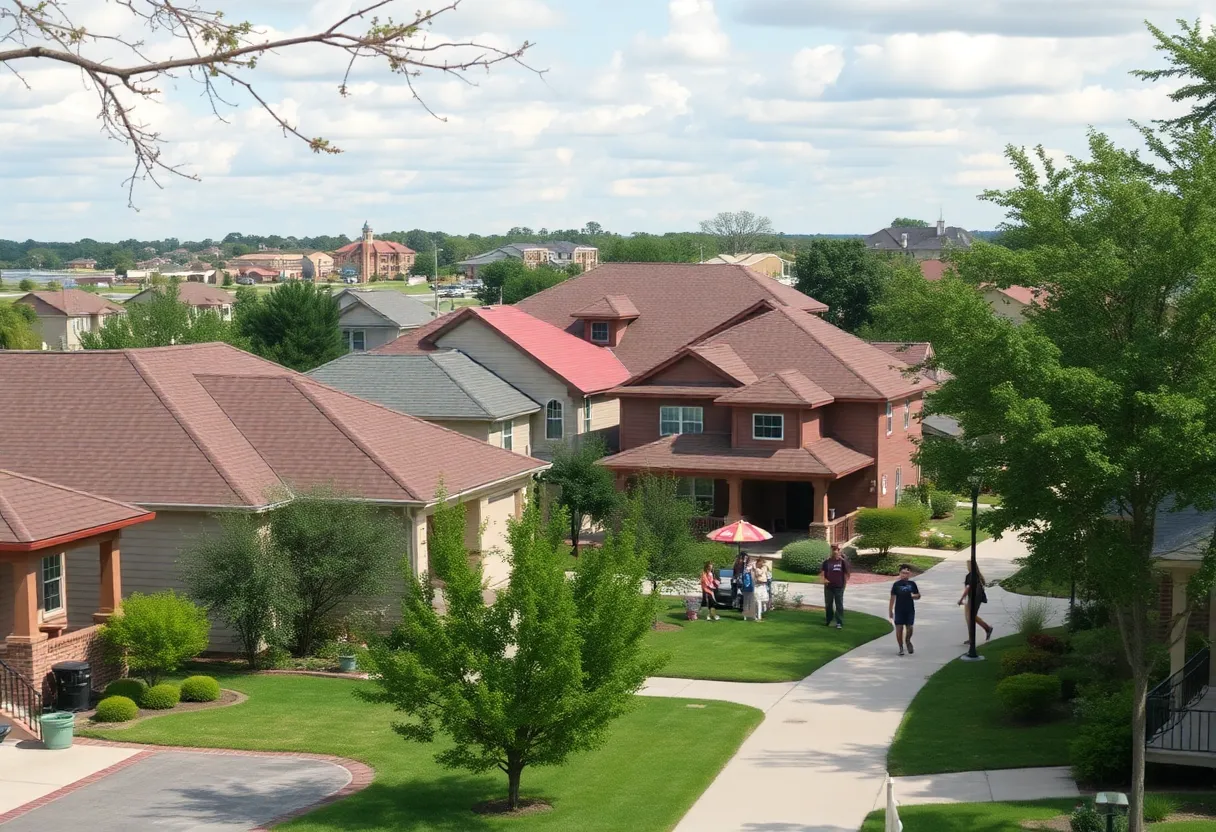News Summary
College Station is under scrutiny as two state legislative committees evaluate Senate Bill 1567 and House Bill 2797, which propose to eliminate occupancy limits for unrelated individuals in residential homes. As the student population at Texas A&M University continues to grow, these proposed changes spark discussions around affordable housing and community dynamics. While the local government committee approved SB 1567, concerns raised by city council members about misinformation have added complexity to the situation. This ongoing debate highlights the need for a balanced approach to housing in the region.
College Station’s Housing Ordinance Under Legislative Scrutiny
In College Station, excitement is in the air as two state legislative committees are taking a closer look at a buzzing issue that affects many residents, particularly students. The proposed Senate Bill 1567 and House Bill 2797 aim at doing away with a city ordinance that limits the number of unrelated occupants in residential homes. This ordinance has been around for quite some time, and with a growing student population at Texas A&M University, it’s become a hot topic for discussion.
What’s the Buzz About?
These bills suggest a shift in how occupancy is regulated based on various factors such as bedroom size and existing health and safety standards. They would only apply to university towns like College Station. A significant component of SB 1567 also emphasizes that university towns shouldn’t require property managers to showcase leases to validate how many unrelated occupants are living in their properties. This could be a game changer for many college students looking for affordable housing options.
A Unanimous Vote, But Mixed Feelings
In a notable turn of events, the Senate’s local government committee gave a thumbs-up to SB 1567 without any objections. However, on the other side of the house, the land and resource management committee hasn’t voted on HB 2797 as of March 28, 2025. This is where things get a little murky, as College Station city council members have raised flags about the potential misinformation surrounding the hearings.
The Misinformation Meltdown
During the hearings, concerns were voiced about some statements not reflecting the reality of the situation in College Station. Councilman David White encouraged residents to tune in and get educated about the discussions, even suggesting some of the claims made during the hearings were false. Meanwhile, Councilwoman Melissa McIlhaney shared her frustrations over the lack of validation of these misleading statements by some state senators.
Tracking and Tensions
Adding to the controversy, the bill’s author brought up incidents of vehicles being tracked around homes to enforce compliance with the ordinance. Although he mistakenly claimed this tracking was conducted by the city, it was actually a grassroots effort by the College Station Association of Neighborhoods (CSAN). The issue has ignited a wider conversation on how to balance the needs of homeowners with those of students who often face challenges when it comes to affordable housing.
Students Speak Out
Many students have spoken up, arguing that the occupancy restrictions create extra financial pressures, especially as housing costs in the area rise. The ordinance, which limits unrelated occupants to just four, has not been actively enforced until recently, priming tensions that now exist between student renters and local homeowners. While students argue for their rights and representation, homeowners express the importance of keeping the community attractive for families and reducing competition for single-family homes.
What’s Next?
Moving ahead, if these occupancy bills are signed into law, enforcement will hinge on parking observations and neighbor complaints. As the city grapples with a growing demand for affordable housing solutions, these legislative actions seem timely. Just recently, College Station was recognized as the fourth most dynamic metropolitan area in America’s heartland, a reflection of its strides in technology, manufacturing, and entrepreneurial spirit.
Add in the establishment of a new strategic planning committee at the Bryan Independent School District collecting data for a possible bond election, and it’s clear there’s significant movement happening in this vibrant community. The future of College Station is on the line as these legislative changes could reshape the neighborhood’s landscape for years to come.
This is certainly a pivotal moment in College Station’s story. As residents closely follow the developments, continued dialogue and understanding will be essential to ensure a balanced approach that caters to both students and homeowners.
Deeper Dive: News & Info About This Topic
HERE Resources
Texas Legislature Proposes Historic Budget for 2026-2027
Bryan Mayor Discusses Community Issues and Future Plans
College Station Welcomes New Auditor and Celebrates Transparency
South Carolina Concludes $1.8 Billion Accounting Error Investigation
College Station ISD Commits $56.85 Million to School Renovations
College Station’s Living History Weekend Brings Community Together
San Marcos Student Housing Transformation: The Edge Acquired
Brazos County Commissioners Approve Major Projects
Concerns Addressed by College Station Councilman David White
Bastrop, Texas Becomes a Thriving Center for Innovation
Additional Resources
- WTAW News on College Station City Council Reaction
- Wikipedia: College Station, Texas
- KBTX: College Station Designated Leading Dynamic Metropolitan
- Google News: College Station Housing Ordinance
- KAGS TV: New Occupancy Limits in College Station
- Google Search: College Station City Council
- KAGS TV: George Strait Places College Station on the Map
- Google Scholar: College Station Housing Legislation
- WTAW: College Station City Council Adds Civil Penalty
- Encyclopedia Britannica: College Station







